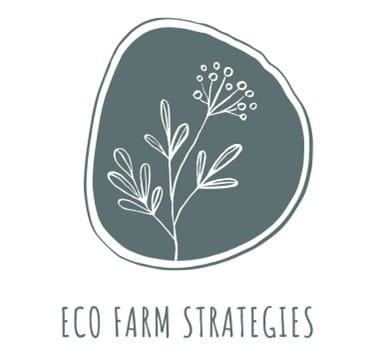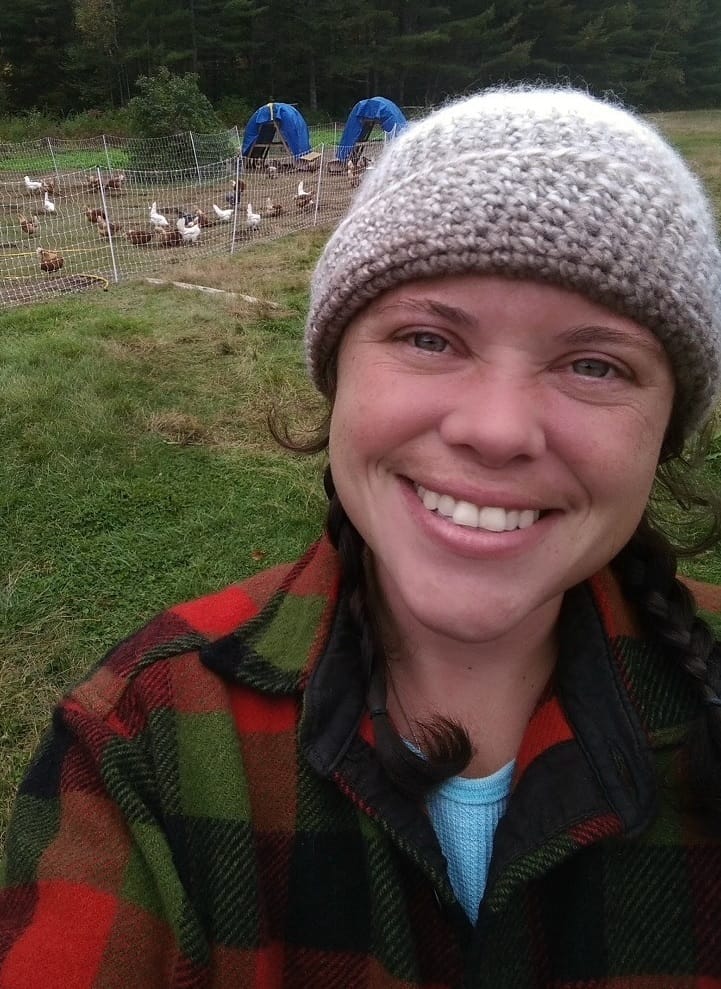- Eco-Strategies for Small Farms
- Posts
- Why 80% of Regenerative Farmers are More Profitable (And What It Takes to Join Them)
Why 80% of Regenerative Farmers are More Profitable (And What It Takes to Join Them)
Eco-Farm Strategies: Issue 06


What if I told you that being too broke to buy fertilizer was the best thing that ever happened to my farm?
BEST LINKS
🌿 RECOMMENDED READING
From Poor Fields to Top Yields: An Indiana Farmer’s Soil Transformation Journey
Roger Wenning began focusing on soil health in the 1980s, turning erosion-prone hills and ‘crawdad ground’ into thriving acres.
Permaculture and Relocalizing as Peaceful Noncompliance with Ben Falk
Withdrawing from mainstream economic systems by becoming producers rather than consumers, relocalizing trade and resources, and creating parallel structures that work with natural systems as a means of resistance.
🗝️ FUNDING RESOURCE 🗝️
 | The Maryland Producer Cold Storage Grant Program assists farmers and watermen in purchasing the necessary cold storage equipment for their operations. MARBIDCO will match up to 50% of the cost of the project purchase, with a maximum grant award amount of $2,000. |
DEEP DIVE
Why 80% of Regenerative Farmers are More Profitable (And What It Takes to Join Them)
Regenerative agriculture represents a fundamental economic shift from costly input dependency to profitable natural systems - but success requires understanding and planning for the complete financial journey, not just the destination.
Sometimes the best farming decisions come from having no other choice. When you're bootstrapping an operation, you quickly learn that nature's systems cost a lot less than trying to replace them with purchased inputs. My environmental convictions got me interested in regenerative practices, but my tight budget made them essential.
That forced education in working with natural systems instead of against them led me to discover what many farmers are now realizing: the transition to regenerative agriculture isn't just about doing right by the land—it's about building a more profitable, resilient operation. But like any major farm decision, the economics need to make sense.
The Real Cost of Getting Started
The transition to regenerative agriculture represents one of the most significant economic decisions a farmer can make. While the long-term benefits are compelling, understanding the complete financial picture is crucial for making informed decisions about your farming future.
Upfront Investment Requirements
Research shows upfront investments range from $200-500 per acre, depending on equipment decisions and farm management choices. The primary expenses include new or specialized equipment for no-till operations, cover crop seeds, management system changes, and training investments.
Smart Cost-Reduction Strategies
Small and medium-sized farms can reach profitability by making prudent investment decisions through equipment sharing, using agricultural services to limit equipment investments, and alternating with more profitable crops in rotations.
Navigating the Transition Dip
Expected Timeline and Financial Impact
The transition typically takes 3-5 years, during which farmers can expect losses of $11.50-$39 per acre due to decreased yields and capital outlays. After an initial 1-2 year period when yields tend to decline, there's typically no difference between conventional and regenerative farming yields.
Why the Dip Occurs
Shifting away from synthetic fertilizers means soil needs time to rebuild microbial diversity and nutrient content. However, this temporary reduction is a strategic investment in long-term land health and profitability.

The Long-Term Payoff
Remarkable Profitability Increases
Once the transition concludes, the economic case becomes compelling:
A 2018 Ecdysis Foundation study found regenerative farmers were nearly 80% more profitable than conventional farmers
Farmers can expect 15-25% return on investment after full transition
Potential annual returns of $20-60 per acre for the first decade
Some studies suggest profit increases as high as 120% over time
Input Cost Reductions Drive Profits
By improving soil health, regenerative agriculture dramatically reduces costly inputs. Healthy soils rich in organic matter and biodiversity naturally suppress weeds, support beneficial insects, and retain nutrients. Real-world examples show farms reducing fertilizer use by 50% and pesticide costs by 75%.
How Regenerative Practices Improve Profitability
Enhanced Water Management
Regenerative practices deliver remarkable water conservation results:
30% less water usage compared to conventional farming
15-20% higher water infiltration rates
Up to 150% improvement in infiltration after five years
These improvements translate directly to reduced irrigation costs and improved drought resilience.
Biodiversity Benefits
Enhanced biodiversity naturally protects against pests, reducing the need for costly fertilizers and pesticides. Regenerative farming systems offer greater ecosystem services and profitability compared to conventional methods.
Climate Resilience
Diverse crop rotations and integrated practices provide resilient income streams. During extreme weather events, diversified farms are better equipped to withstand losses. Instead of substantial yield drops in drought years, regenerative farms see only modest reductions due to improved soil water retention.
Making the Numbers Work
Financial Support and Risk Mitigation
USDA EQIP: Average farmers receive $30,000 in reimbursements for regenerative projects
State incentive programs: Many states offer additional support
Carbon credit opportunities: Growing markets for ecosystem services
Impact investment funds: Specialized financing for regenerative transitions
Innovative Risk-Sharing
Progressive programs like Mad Agriculture's Perennial Fund offer 10-year revolving operating loans with low costs and flexible repayment options. Food system partners are increasingly covering initial investment and transition costs, sharing risks rather than placing the burden solely on farmers.
Market Opportunities
Regenerative farmers capture premiums through certifications like "Organic" or "Grass Finished" while simultaneously lowering input costs. Growing consumer and corporate demand for sustainably produced food creates opportunities for price premiums and long-term contracted sales.
Making the Economic Case
Realistic Timeline Expectations
With upfront investments accounted for, payback periods average approximately 9 years with a 4% annual return. However, the short-term risks during transition are significant, requiring adequate support structures including both financial and technical assistance.
Success Factors:
➡️Adequate capital and cash flow for the 3-5 year transition
➡️Access to technical support and education
➡️Market connections for regeneratively produced crops
➡️Risk-sharing partnerships with buyers or financial institutions
RECOMMENDATIONS
🪜 Your Action Step This Week:
Calculate your current input costs per acre for the past 3 years:
➡️Gather records for fertilizers, pesticides, herbicides, and soil amendments
➡️This 30-minute exercise creates your baseline for evaluating potential savings
🔮 WHAT’S COMING NEXT?
Coming next week: "Planning Your Transition" - Get the practical framework for implementing regenerative practices gradually and strategically. We'll help you identify which changes to make first based on your farm's unique needs - because the most successful transitions happen one step at a time.
🔦 COMMUNITY SPOTLIGHT 🔦
Judith Schwartz is an environmental journalist and author who has become a leading voice in regenerative agriculture and ecological restoration.
 Judith Schwartz | Her influential books "Cows Save the Planet" (2013) and "The Reindeer Chronicles" (2020) have helped bring mainstream attention to how holistic land management practices can restore ecosystems and combat climate change. Schwartz specializes in translating complex ecological science into accessible narratives that demonstrate how agriculture can be part of environmental healing rather than degradation. Through her writing, she frequently highlights innovative farmers, ranchers, and land stewards who are proving that working with natural systems can regenerate landscapes while maintaining productive food systems. |
Judith has established herself as a key communicator showing how practices like managed grazing can sequester carbon, restore water cycles, and offer nature-based solutions to environmental challenges.
THAT’S A WRAP!
Before you go: Here are 3 ways I can help…
Grow Your Customer Base — Help for fellow farmers and non-profits to grow profits and donations, increase community engagement and retain customers through storytelling marketing strategies.
Resources from Runamuk — NEW! A growing list of resources available to paid subscribers of the Runamuk farm-blog, including my ebook: “How to Buy a Farm With NO Money”.
One-on-One — We can help you create pollinator habitats, wildlife conservation planning, ecological restoration, and biodiversity assessments to enhance natural ecosystems on properties.
See you next week!
—Sam

PS - Check out my most recent farm-update! Click Here
Feel free to send me feedback: [email protected]